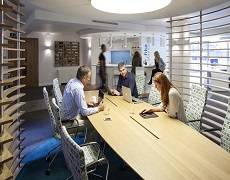February 24, 2014
CIPD calls for a budget to address decline in UK productivity
 The CIPD has urged the Chancellor to focus on delivering a “Budget for Productivity” when he delivers his 2014 Budget on 19 March. The employment body has today put forward a package of proposals which call for labour market inclusion and the development of more productive, inclusive, and engaging workplaces. It is calling for a fundamental review of UK skills policy, together with a new focus on the workplace, the nature of jobs for the future, and how skills are being utilised. This, the CIPD argues, is critical if the necessary leap in productivity is to be delivered to boost real wages. A recent CIPD report found that already weak UK productivity has worsened as a result of a slow-down in job turnover during the recession and an extraordinary run of hiring that has preceded the recent return to growth. (more…)
The CIPD has urged the Chancellor to focus on delivering a “Budget for Productivity” when he delivers his 2014 Budget on 19 March. The employment body has today put forward a package of proposals which call for labour market inclusion and the development of more productive, inclusive, and engaging workplaces. It is calling for a fundamental review of UK skills policy, together with a new focus on the workplace, the nature of jobs for the future, and how skills are being utilised. This, the CIPD argues, is critical if the necessary leap in productivity is to be delivered to boost real wages. A recent CIPD report found that already weak UK productivity has worsened as a result of a slow-down in job turnover during the recession and an extraordinary run of hiring that has preceded the recent return to growth. (more…)
























November 21, 2013
What the death of the landline tells us about how we work
by Mark Eltringham • Comment, Flexible working, Technology
(more…)